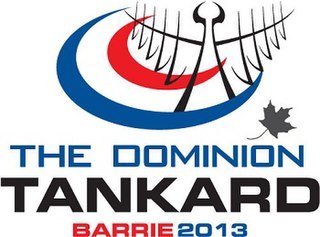Related Research Articles

Kingston is a city in Ontario, Canada, on the northeastern end of Lake Ontario. It is at the beginning of the St. Lawrence River and at the mouth of the Cataraqui River, the south end of the Rideau Canal. Kingston is near the Thousand Islands, a tourist region to the east, and the Prince Edward County tourist region to the west. Kingston is nicknamed the "Limestone City" because it has many heritage buildings constructed using local limestone.
Stanley Thompson was a Canadian golf course architect, and a high-standard amateur golfer. He was a co-founder of the American Society of Golf Course Architects.
Matt McQuillan is a Canadian professional golfer. He has played on the Canadian Tour since 2003, and won one tournament there. McQuillan earned 2011 playing privileges on the PGA Tour with a strong performance in stage three of Q-School, on his first attempt at the finals. His best career PGA Tour finish is a tie for third in the 2011 John Deere Classic.

The Lambton Golf and Country Club is a private golf and tennis club in Toronto, Ontario, Canada. The golf club was established by Albert William Austin in 1902. The golf club is presently members with Golf Canada, and the United States Golf Association., and has hosted a number of competitions including the Canadian Open, and the Canadian Amateur Championship.

Gary Cowan is a Canadian golfer who has achieved outstanding results at the highest class in amateur competition.
Garrison Golf & Curling Club is a golf and curling club, located within CFB Kingston in Kingston, Ontario, Canada.

The Ottawa Hunt and Golf Club, often referred to as Ottawa Hunt or the Hunt Club, is a private golf and curling club in Canada, located in Ottawa, Ontario. Founded 117 years ago in 1908 as a hunting club, it has hosted many world-class professional and amateur golf tournaments, along with many high-profile Canadian curling events.
Weston Golf and Country Club is located in Toronto, Ontario. Designed by Willie Park, Jr., it was home to Arnold Palmer's first PGA Tour victory in the 1955 Canadian Open.
James Grattan, nicknamed "Jimmy the Kid" is a Canadian curler from Oromocto, New Brunswick. He currently skips his own team.
The Scarboro Golf and Country Club is a private club in eastern Toronto, Ontario, Canada, located in the former city of Scarborough. Until 2018, it had facilities for curling and has an 18-hole golf course that is ranked among the top courses in Canada.

The 2011 Dominion Tankard, southern Ontario men's provincial curling championship was held February 7–13 at the Peach King Centre in Grimsby, Ontario. The winning team of Glenn Howard will represent Ontario at the 2011 Tim Hortons Brier in London, Ontario.
Gregory Balsdon is a Canadian curler from North York, Ontario. He currently skips a team on the World Curling Tour.

The Brantford Golf & Country Club is a private golf course and former curling club located in Brantford, Ontario, Canada. It is the fourth oldest golf club in North America having been founded in 1879. The course is ranked 46 in 2010 Scoregolf Top 100 Courses in Canada.

The 2013 Dominion Tankard, southern Ontario's men's provincial curling championship, was held from February 4 to 10 at the Barrie Molson Centre in Barrie, Ontario. The winning team of Glenn Howard represented Ontario at the 2013 Tim Hortons Brier in Edmonton, Alberta.

The 2014 Travelers Tankard, southern Ontario's men's provincial curling championship, was held from January 27 to February 2 at the Smiths Falls Community Memorial Centre in Smiths Falls, Ontario. The winning Mark Bice team represented Ontario at the 2014 Tim Hortons Brier in Kamloops, British Columbia.
The 2017 Recharge With Milk Men's Tankard, better known as the Ontario Tankard was the 2017 edition of the Ontario men's provincial curling championship to determine who will represent the province of Ontario at the 2017 Tim Hortons Brier, the national curling championship of Canada. In 2017, the Tankard was contesteded in conjunction with the 2017 Ontario Scotties Tournament of Hearts, at the Cobourg Community Centre in Cobourg, Ontario, January 29-February 5, 2017.
Patrick "Pat" Janssen is a Canadian curler from Burlington, Ontario.
Paul Dobson is a Canadian curler from Quispamsis, New Brunswick. He currently plays second on Team James Grattan.
Jonathan Beuk is a Canadian curler from Kingston, Ontario.
Wesley Forget is a Canadian curler. He is a former Canadian Curling Club Champion, and represented Ontario at the 2019 Tim Hortons Brier, Canada's national curling championship.
References
- ↑ Jones, 1987
- ↑ The Evolution of Cataraqui Golf Course, by John D. Smith, 2002, Heinrich Heine Press at Grass Creek, Kingston, Ontario, ISBN 0-919234-03-8, p. 1
- ↑ Barclay, James A. (1992). Golf in Canada: A History. Toronto: McClelland & Stewart. pp. 41, 97. ISBN 978-0-7710-1080-4.
- ↑ Barclay, pp. 96–7, 105–6
- ↑ Cataraqui: The First 70 Years 1917-1987, by Lyndon Jones, 1987, Belleville, Ontario, Mika Publishing Company, ISBN 0-921341-10-5; Smith, 2002
- ↑ The Evolution of Cataraqui Golf Course, by John D. Smith, 2002, Heinrich Heine Press at Grass Creek, Kingston, Ontario, ISBN 0-919234-03-8, pp. 1-27
- ↑ Smith, 2002
- ↑ Smith
- ↑ The Evolution of Cataraqui Golf Course, by John D. Smith, 2002, Heinrich Heine Press at Grass Creek, Kingston, Ontario, ISBN 0-919234-03-8, pp. 37-75
- ↑ golfcanada.ca, competitions calendar
- ↑ History of Golf in Canada, by L.V. Kavanaugh, 1973, Fitzhenry and Whiteside Ltd., Toronto, ISBN 0-88902-014-0, pp. 170, 186-193.
- ↑ Kingston Whig-Standard , July 22, 2008.
- ↑ Cataraqui Golf and Country Club: The First Seventy Years 1917-1987, by Lyndon Jones, 1987, Belleville, Ontario, Mika Publishing Company, pp. 61-74